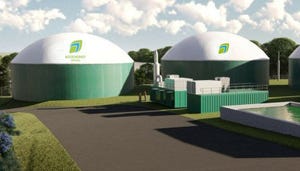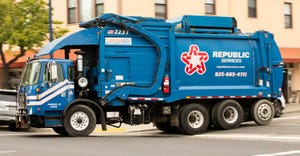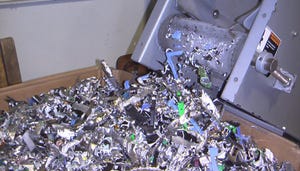COLLECTION: Blue Bags Remain A Top Contender For Collection
May 1, 1994
Jill Slovin
Blue bags offer an alternate route for cities to collect recyclables.
Last October, Chicago joined the ranks of cities across the nation that have selected a blue bag program over curbside containers and drop-off sites.
Under the city's plan, which is expected to go into effect in September of 1995, residents in single-family homes and small apartment buildings will deposit cans, glass, plastic containers, newspaper, paper and cardboard into blue bags. Chicago Streets and Sanitation workers will co-collect the bags.
According to Ken Davis, spokesperson for Chicago's Department of Environment, co-collecting the blue bags with the rest of the trash is the beauty of the program.
After approximately two years of studies, pilot programs and extensive analysis, the city's go-ahead with blue bags was based purely on economics, according to Davis.
"With a curbside collection program, we would've had to purchase around 300 new trucks, conservatively. And because of labor contracts, we would have had to put an additional 1,000 people behind the trucks. This would have been a permanent addition to the operating budget," said Davis.
Co-collecting the blue bags will allow the city's truck and crew size to remain the same, said Davis. "There will be no additional costs," he added.
While the city will maintain the collection operations, it has opted to privatize the processing side of the program. Waste Management Inc. (WMX), Oak Brook, Ill., will build and operate four material recovery facilities (MRFs) that will require approximately 120 people per plant, per shift, to process the materials.
In 1991, Cleveland began to collect recyclables in blue bags as a pilot project. This past March, the city completed its two-phase expansion program, making Cleveland an official blue bag city.
Residents in the city's 190,000 households can purchase large, 30-gallon size bags or use four-gallon bags from grocery stores. "In a city as large as Cleveland, some residents can afford to buy bags, while others cannot," said Cleveland Program Manager, Jeff Tierce.
The program's benefits, according to Tierce, include fewer materials breaking inside the bags and the simplicity of placing all recyclables into one bag. In addition, the city doesn't have to worry about stolen bins.
While the city has continued to use its existing fleet to collect recyclables, the collection method differentiates Cleveland's program from Chicago's planned program.
In Cleveland, residents put all their garbage, recyclables and yard waste out on their designated collection day. The city's trucks collect each item one at a time. For example, the crew begins its day by collecting garbage. After dumping the garbage, the crew follows the same route to collect the blue bags. The last trip is designated for yard wastes.
Tierce noted that the city has recently placed an order for 18 co-collection vehicles.
"The blue bag program is relatively inexpensive," Tierce said. "By using the existing labor, we have kept labor costs to a minimum. By recycling, we are saving money over landfilling. For example, it costs us $5 per ton to recycle newspapers and it costs us $18.95 to landfill newspapers. On newspapers alone, we save $24 per ton."
Cleveland has a cooperative agreement to process the recyclables. The city operates the front-end separation and then sends the newspaper and cardboard to a private processor; a non-profit agency processes the blue bags.
Since surrounding cities are using a similar program with an established MRF, Cleveland does not have to build its own processing facility. In the entire county, more than half of the 1.4 million residents use blue bags, according to Tierce.
Most consumers prefer to purchase their own bags rather than use the ones provided by the city, said an industry official who specializes in bag design. For a single-family household whose recyclables are collected once a week, the 13-gallon, tall kitchen bags are most popular. Bag size preference, however, stems back to the amount of recyclables generated and the frequency of collection (see chart on page 8). Communities under state bottle bill laws generally place fewer bottles into the bags, which is another factor to consider when determining which bag size is best.
Because the recyclables are sorted at the MRF instead of the curb, translucent bags are preferred. The transparency allows collectors to perform a visual separation and ensure that garbage is not mixed in with the recyclables. While the plastic bags can range from clear to a light shade of blue, consumers reportedly do not have a color preference. Some recycling coordinators opt for blue bags since residents tend to associate blue with recycling.
Collection frequency helps to determine what size and strength bag will be needed. In general, a draw tape closing is preferred over a twist tie since it allows air to escape the bag when compacted, according to an industry official.
After all, the goal is to get the bag to the materials recovery facility - in one piece.
You May Also Like


